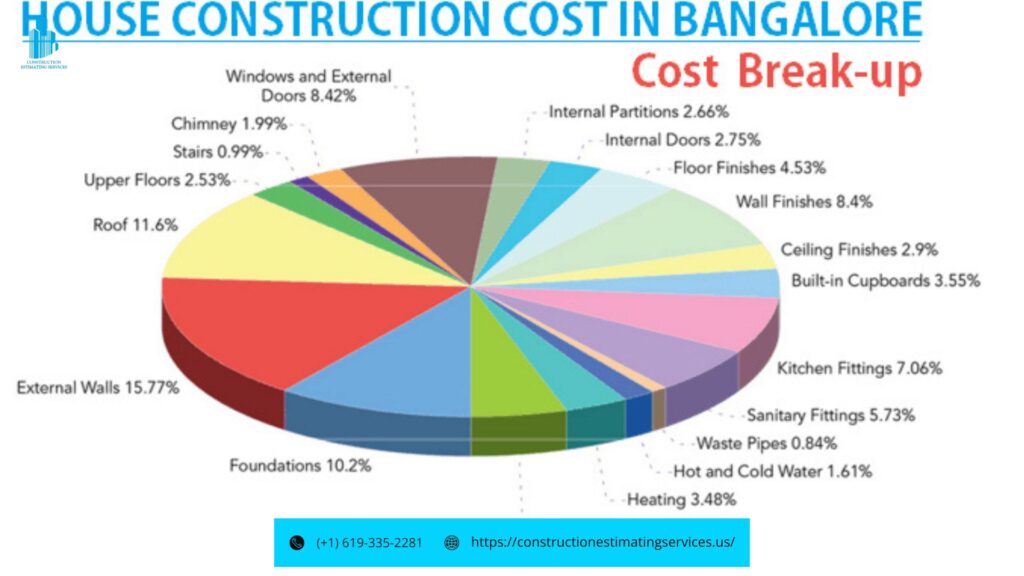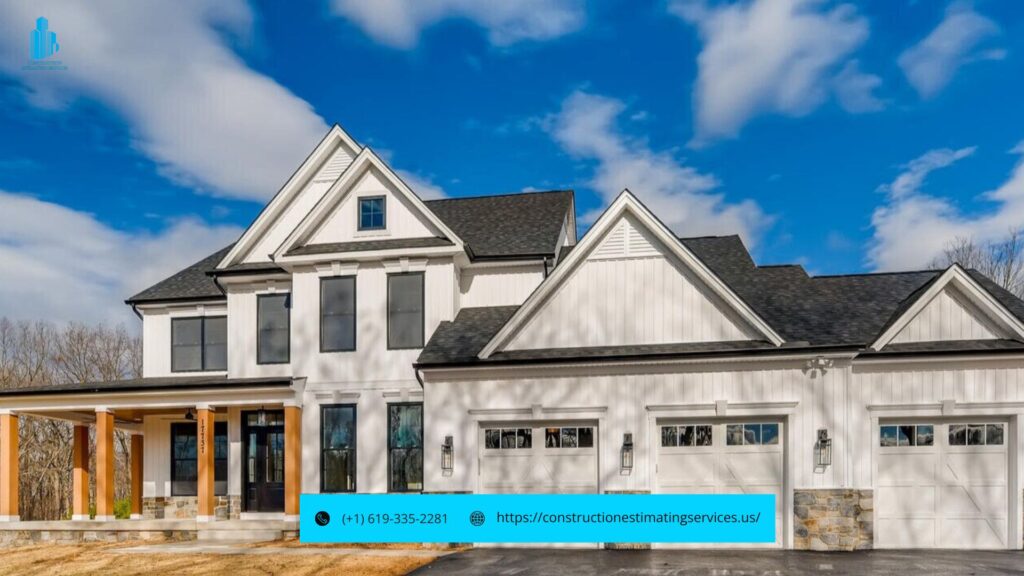Hidden costs in construction can turn even the best-planned projects into budget-busting nightmares—what you see on the surface is only a fraction of the story. You might start with a bulletproof budget, every line item neatly accounted for: materials, labor, permits. But then, the unexpected creeps in. A spike in steel prices. A surprise permit fee. A delay that drags labor costs through the roof. Before you can blink, your carefully planned budget is a distant memory, and you’re left wondering where it all went wrong.
If this sounds familiar, you’re not alone. Most construction projects don’t bust their budgets because of one glaring mistake—they bleed out from a thousand tiny cuts, those hidden expenses no one warned you about. In 2025, with supply chains still shaky, labor shortages lingering, and regulations tightening, these costs are more unpredictable than ever. Let’s pull back the curtain, break down where your money’s really disappearing, and arm you with practical, no-nonsense strategies to keep your project—and your profits—on track.
Why Do Construction Budgets Always Go Over?
Picture this: You’ve got your spreadsheet ready, numbers crunched, contingencies penciled in. You’re feeling good—maybe even a little cocky. Then reality hits. A supplier jacks up prices mid-project. The city slaps you with an unexpected fee. Weather slows your crew, and suddenly you’re paying for extra weeks of work. It’s not one big disaster—it’s the slow drip of overlooked costs that sinks you.
The truth is, construction isn’t just about building something; it’s about managing chaos. And in 2025, that chaos comes with a heftier price tag. Inflation’s still flexing its muscles, skilled workers are harder to find, and regulators seem to invent new hurdles daily. The good news? You can stay ahead—if you know where to look. Let’s dive into the five biggest hidden cost culprits and how to outsmart them.

1. Material Costs Keep Rising – And You Can’t Ignore It
Why Do Prices Keep Jumping?
Materials are the heartbeat of any construction project, but their costs are about as stable as a house of cards in a windstorm. One minute, lumber’s sitting pretty at $600 per thousand board feet; the next, it’s $900 because a global supply chain hiccup—or a tariff—throws everything off. Steel, concrete, insulation—you name it, it’s all at the mercy of market whims, inflation, and geopolitics. If you’re not paying attention, these price swings can gut your budget faster than you can say “change order.”
Real-World Example:
Take a contractor working on a mid-rise building. They lock in a $75,000 materials budget based on early quotes. Everything’s humming along until delivery day arrives, and bam—prices have spiked 18%. That’s an extra $13,500 they didn’t see coming, all because they didn’t account for a sudden steel shortage. It’s not laziness; it’s just how fast things move in today’s market.
How to Avoid the Surprise?
You don’t have to be a fortune-teller to dodge this bullet—just proactive. Here’s how:
- Secure Pricing Early: The second your project’s greenlit, lock in bulk pricing with suppliers. Signed contracts can shield you from mid-project hikes.
- Track Market Trends: Keep an eye on price forecasts—sites like Construction Dive or even supplier newsletters can tip you off to looming spikes. Order before the storm hits.
- Work With Multiple Suppliers: Don’t put all your eggs in one basket. Having backup options means you’re not stuck paying whatever the lone supplier demands.
Extra Tip: Build Relationships
Here’s something I’ve learned from seasoned contractors: Get cozy with your suppliers. A quick coffee chat or a friendly call can score you insider intel—like when a price jump’s brewing—or even a loyalty discount. It’s old-school, but it works.
What Contractors Are Asking Right Now
- Why are construction material prices always rising? Supply chains are still recovering from pandemic disruptions, and demand’s outpacing supply.
- How do I lock in material pricing before it goes up? Negotiate fixed-rate contracts early and buy in bulk.
- What’s the best way to reduce material costs in 2025? Shop around, time your purchases, and don’t skimp on research.
2. Permits & Fees – The Hidden Costs That Can Shut You Down
Why Are Permits More Expensive Than You Think?
Permits are the gatekeepers of construction—without them, you’re dead in the water. Most contractors budget for the basics: building permits, maybe a utility hookup fee. But local governments have a knack for tossing in curveballs—environmental impact studies, zoning variances, energy compliance reports. Miss one, and you’re not just paying extra; you’re stalling the whole project, racking up costs for idle crews and rented gear.
Real-World Example:
A contractor budgets $12,000 for permits on a commercial build, thinking they’ve dotted every “i.” Mid-project, the city demands a stormwater drainage permit—$9,000 they didn’t plan for, plus a two-week delay. That’s $9,000 in fees and thousands more in lost time, all from one oversight.
How to Stay Ahead?
Don’t let red tape blindside you. Try these:
- Research Updated Permit Costs: Regulations evolve—check city websites or call the planning office before you bid.
- Budget 15-20% Extra: Unexpected fees are the norm, not the exception. Pad your estimate to cover the inevitable.
- Hire a Permit Consultant: If you’re in a tricky jurisdiction, a pro who knows the local game can save you time and cash.
Bonus Insight: The Delay Domino Effect
Delays don’t just cost you permit fees—they ripple. A two-week holdup might mean rescheduling subs, extending equipment rentals, or even paying penalties if you miss a client deadline. One contractor told me a single permit snag once cost him $25,000 in knock-on expenses. Plan for the worst, and you might just break even.
What Contractors Want to Know
- How much do permits really cost in 2025? It varies—$5,000-$50,000 depending on scope and location—but extras can double that.
- What happens if I don’t get the right permits? Fines, stop-work orders, or even tearing down unapproved work.
- Can permit delays be avoided? Yes, with early research and expert help.

3. Labor Costs Keep Climbing – And They Won’t Stop Anytime Soon
Why Is Labor More Expensive Every Year?
Labor’s the backbone of construction, but it’s also one of the biggest budget busters. Wages are creeping up—think $55/hour jumping to $65/hour in a year—because skilled workers are scarce, unions are flexing, and living costs keep rising. Underestimate this, and you’re not just over budget; you’re scrambling to finish.
Real-World Example:
A contractor plans a six-month job with 15 workers at $55/hour. Labor shortages hit, wages climb to $65/hour, and suddenly payroll balloons by $144,000. That’s not a rounding error—that’s a profit-wiping disaster.
How to Keep Costs in Check?
You can’t stop wages from rising, but you can plan smarter:
- Plan for Higher Wages: Assume a 5-10% annual bump and build it into your budget.
- Use Scheduling Software: Tools like Procore or Buildertrend minimize overtime by keeping tasks on track.
- Have a Labor Backup Plan: Line up temp agencies or subs so delays don’t leave you shorthanded—and overpaying.
From the Field: The Overtime Trap
I talked to a site manager who learned this the hard way. His crew hit a snag, worked late to catch up, and racked up $10,000 in overtime in one month. “If I’d scheduled tighter or had a spare guy ready, I’d have saved half that,” he said. Lesson? Overtime’s a budget killer—avoid it.
What Contractors Want to Know
- Why are construction labor costs increasing? Fewer workers, higher demand, better union deals.
- How do I prevent overtime from destroying my budget? Tight schedules and extra hands.
- What’s the best way to estimate labor costs in 2025? Factor in wage trends and pad for shortages.
4. Insurance & Legal Costs – The Price of Playing It Safe
Why Are Insurance Costs Rising?
Insurance isn’t optional—it’s your safety net. But premiums are climbing because claims are up, regulations are stricter, and clients want more coverage. Skimp here, and a single accident could sink you.
Real-World Example:
A contractor budgets $30,000 for insurance. A minor job site mishap triggers a claim, and their next premium jumps 25%—an extra $7,500 they didn’t see coming.
How to Keep Insurance Costs Under Control?
Stay ahead of the game:
- Shop Around: Don’t auto-renew—compare rates yearly to find savings.
- Boost Safety: Fewer accidents mean lower premiums. Train your crew and enforce rules.
- Know Your Needs: Over-insuring wastes money—tailor coverage to your risks.
Insider Tip: Safety Pays Off
A contractor friend cut his premiums by 15% after investing $5,000 in safety gear and training. “One less claim, and it paid for itself,” he said. It’s not just about cost—it’s about peace of mind.
What Contractors Want to Know
- How much insurance does a contractor really need? Depends on project size—$1M-$5M in liability is standard.
- What’s the best way to lower construction insurance costs? Safety and shopping around.
- Does safety training actually reduce insurance premiums? Yes, insurers love lower risk.
5. Equipment Costs – Renting vs. Buying Can Make or Break Your Budget
Why Equipment Costs Are Sneakier Than You Think
Renting equipment sounds smart—less upfront cash, no maintenance headaches. But stretch that rental too long, and it’s a money pit. Delays turn a cheap fix into a budget buster.

Real-World Example:
A contractor rents a crane for $12,500/month, expecting four months. Delays stretch it to seven, adding $37,500 in unplanned costs. Buying might’ve been cheaper.
How to Avoid Wasting Money on Equipment?
Keep your wallet intact:
- Lease for Long Jobs: Over six months? Leasing or buying beats renting.
- Return Fast: Unused gear sitting around is cash down the drain—send it back ASAP.
- Track Progress: Delays extend rentals—stay on top of timelines.
Real Talk: The Rent-or-Buy Dilemma
A contractor I know crunched the numbers on a year-long job. Renting a backhoe cost $24,000; buying a used one was $30,000 with $5,000 resale value. He bought, saved $19,000, and kicked himself for not doing it sooner. Run the math—it pays.
What Contractors Want to Know
- Should I rent or buy construction equipment? Short jobs: rent. Long jobs: consider buying.
- How do I calculate total equipment costs? Factor in rental rates, duration, and delays.
- What’s the best way to manage rental equipment? Strict timelines and quick returns.
How to Keep Your Construction Budget From Falling Apart in 2025
Hidden costs are the silent assassins of construction profits. They don’t announce themselves—they sneak up, chip away, and leave you wondering how you missed them. But here’s the kicker: You can beat them. It’s all about planning ahead, staying sharp, and refusing to let the little things snowball.
Here’s your 2025 survival checklist:
- Secure Material Pricing Early: Delays mean higher costs—lock it in.
- Budget Extra for Permits: Regulations shift—be ready.
- Plan for Labor Increases: Wages won’t drop—pad your numbers.
- Compare Insurance Rates: Overpaying’s optional—shop smart.
- Rent Equipment Wisely: Every extra day burns cash—watch the clock.
A Final Word From the Trenches
I’ve seen contractors turn budgets around with these tricks. One guy I know dodged a $50,000 overrun by locking in steel prices early and hiring a permit guru. Another saved $20,000 by buying a used excavator instead of renting. It’s not rocket science—it’s street smarts. Construction isn’t just about getting the job done; it’s about getting it done without losing your shirt.
Make 2025 your year to flip the script. Stop chasing costs and start outrunning them. Your bottom line—and your sanity—will thank you.

Frequently Asked Questions
Why do hidden costs in construction always seem to sneak up on me?
Answer: Trust me, you’re not the only one feeling ambushed! Hidden costs creep in because construction’s full of surprises—think spiking material prices or last-minute permit fees. In 2025, shaky supply chains and rising wages just make it trickier. The trick is planning ahead with a little extra cushion, like that 5-10% buffer we talked about, so you’re not caught off guard.
How can I stop material prices from wrecking my budget?
Answer: It’s frustrating when lumber jumps from $600 to $900 overnight, right? Lock in prices early—get those supplier contracts signed the minute your project’s a go. Keep an eye on market trends too; a quick peek at supplier updates can save you from a $13,500 hit like that mid-rise contractor faced. Oh, and chat up multiple suppliers—options are your best friend.
What’s the deal with permits costing more than I expect?
Answer: Permits are like that friend who always “forgets” to mention the extra fees—annoying but predictable once you know the game. Cities love tossing in surprises like a $9,000 stormwater permit. Dig into local regs before you bid, pad your budget by 15-20%, and maybe even call in a permit pro. It’s less headache and more control.
Why are labor costs climbing every time I turn around?
Answer: Ugh, I feel you—watching wages jump from $55 to $65 an hour is no picnic. Skilled workers are harder to find, and living costs keep pushing rates up. Plan for a 5-10% hike each year, and use scheduling tools to dodge overtime traps. That $144,000 payroll shock? Could’ve been tamed with a tighter plan.
How do I keep insurance costs from eating my profits?
Answer: Insurance hikes are the worst—like that $7,500 jump after a claim. Shop around every year instead of auto-renewing, and get serious about safety gear—fewer accidents mean cheaper premiums. One guy I know slashed 15% off his bill with a $5,000 safety investment. It’s worth a shot!
Should I rent or buy equipment to avoid hidden costs in construction?
Answer: Tough call, right? Renting’s great for short gigs, but when delays stretch that $12,500/month crane from four to seven months, you’re out $37,500. If it’s over six months, leasing or buying might save you—like that contractor who saved $19,000 on a backhoe. Crunch the numbers and track your timeline; it’s all about what fits your job.
How do I figure out all these hidden costs in construction before they hit?
Answer: It’s like detective work! Start with your past projects—did steel spike last time? Then dig into current trends, chat with your crew about delays, and pad your budget for surprises. Breaking it down—materials, permits, labor—helps you spot the sneaky stuff before it’s a problem.
Can I really avoid permit delays, or am I just stuck?
Answer: You’re not doomed, I promise! That two-week delay from a $9,000 permit snafu? Avoidable with some homework—check city rules early, budget extra, and maybe hire a permit guru who knows the local ropes. It’s less “oh no” and more “I’ve got this.”
What’s the easiest way to cut down on equipment expenses?
Answer: Nobody wants to bleed cash on unused gear, right? Return rentals the second you’re done—every idle day stings. Stick to tight schedules, and if delays loom, weigh leasing over renting. One contractor I heard about shaved thousands just by staying on top of returns.
How do I make sure my 2025 budget doesn’t fall apart?
Answer: It’s all about staying one step ahead. Lock in material prices, pad your permit and labor estimates, shop smart for insurance, and don’t let rentals drag on. Think of it like outsmarting a tricky opponent—you’ve got the moves from this guide to keep your profits safe and your stress low.












